|
|
Blogroll
|
|
Most recent articles |
|
Highlights |
|
States and Economies |
|
World economies: 15 of 50 largest economies are U.S. States: |
|
World States – Table 1 |
|
History and Society |
|
Fourth of July aboard the W.W. II aircraft carrier the U.S.S. Hornet |
|
A. L. Kroeber's The Civilization of California's Far Northwest |
|
The Arab Admiralty – and an Arab naval view of the Crusades |
|
Excerpt from “The Wife of Bath's Prologue” by Geoffrey Chaucer |
|
“Horsey” Vikings: exploring origin of the “Rohirrim” in The Lord of the Rings
|
|
The Battle of Crécy by Winston S. Churchill |
|
Monotheistic Paganism, or just what was it Christianity fought and faced? |
|
Medieval constipation advice for travelers: “A ripe turd is an unbearable burden” |
|
Alexis de Tocqueville's bicentennial: Anticipatory censorship in colonial America |
|
Antiquity vs. Modernity: Alexis de Tocqueville on the mind of the slaveholder vs. soul of America |
|
Federalism, and Alexis de Tocqueville on the origins of American democracy |
|
Science, Technology, Space |
|
Looking in the right direction – towards the future – with regard to global warming |
|
Know Your Neighborhood: from Andromeda to Fermions and Bosons |
|
Magnetars and Pulsars: Science's special section on pulsars |
|
The Geneva-Copenhagen Survey of Sun-like Stars in the Milky Way |
|
Galactic Central: the Black Hole at the Center of the Galaxy |
|
Politics and War |
|
America’s strong arm, wielding the Sword of Iraq, slays the multi-headed Hydra of Al Qaeda |
|
Regional and Personal |
|
Tamara Lynn Scott |
What wailing wight
Calls the watchman of the night?
William Blake
Whirl is king
Aristophanes
“Jumping into hyperspace ain't like dustin' crops, boy.”
Han Solo, another galaxy
|
Blogroll |
|
Grand Central Station |
|
Legal and Economic |
|
History and Society |
|
Science, Technology, Space |
|
Politics and War |
|
Eclectic |
|
Regional |
|
Reciprocal |
© Copyright 2002 – 2009
Michael Edward McNeil
Impearls: Looking in the right direction - towards the future - with regard to global warming
Item page — this may be a chapter or subsection of a larger work. Click on link to access entire piece.
Earthdate 2007-09-29
| Looking in the right direction – towards the future – with regard to global warming |
|
This article utilizes a number of slides/charts deriving from the American Association for the Advancement of Science (AAAS) and their journal Science magazine's 2004 symposium on global warming, Qs and AAAs About Global Climate Change, that was held in Washington, D.C., on June 15, 2004 (earthdate 2004-06-15) — which in addition to providing valuable presentations in their own right (notably not walled-off behind Science’s typically high subscription barrier), have proven fruitful as illustrations of basic science on the topic.
In my view a lot of the argumentation — on both sides — in this great global warming debate has things (at least the overall direction in which folks ought to be looking) precisely backwards. Those people who are generally opposed to the idea that anthropogenic (human caused) global warming is occurring or might be about to occur (anti-AGW aficionados, shall we say) insist that there’s little evidence as yet that what warming has thus far been observed was caused by human activity, and note that the extent of the warming isn’t beyond our historical experience of post ice-age climatic deviations (e.g., the “Little Ice Age” of late medieval/early modern times) which were notably not caused by anthropogenic emission of fossil (formerly sequestered carbon-based) greenhouse gases.
The trouble is, the anti-AGW folks are right; but, unfortunately, the issue having been framed in those terms, scientists who are open-minded about whether anthropogenic global warming is occurring (or at least starting or likely to start occurring) are left scrambling trying to support their hypothesis in a situation where there really is (so far) relatively little such concrete evidence of a long-term global warming trend. Indeed, how could there be? It hasn’t yet gone on for very long.
However, as I say, in my view that’s backwards thinking. The reason, I think, why many researchers believe (or ought to) that AGW is beginning to occur in earnest isn’t because much such warming has occurred so far, but rather because human activities are indubitably releasing exponentially increasing quantities of (formerly sequestered) carbon dioxide — a known insulating gas — and other such “greenhouse” gases into the atmosphere.
Figures 1 and 2 at top (f1 f2) illustrate how the insulating capacity of greenhouse gases is exhibited: The Sun’s light and heat pours in at a temperature near 5,800 kelvins (i.e., white hot: a thermal frequency band in which greenhouse gases are necessarily transparent), heating up the Earth (located some 150 million km away) to a typical temperature of 288 kelvins (15° C. or 59° F.), which heat must then be re-radiated away to outer space within a far lower (higher wavelength) frequency band — where, fortunately or unfortunately, gases like CO2 lie draped like increasingly heavy blanket curtains over the “window” through which the Sun’s heat must escape — lest the planet warm.
Of course, some extraordinary heat retention is a good thing.
Sherwood Rowland (University of California, Irvine) points out in a slide (No. 24, which we haven’t included) from
his presentation
(pdf) at the aforementioned AAAS symposium, the natural greenhouse effect due to traditional, historic levels of CO2 and other such gases in Earth’s atmosphere is worth a temperature “increase” to our planet (over its blackbody temperature) of some +32° C. or +57° F. — lacking which the Earth would subsist at about 255 kelvins (−18° C. or 0° F.) — on average, well below the freezing point of water.
One canard I think can now safely be dismissed: the oft-repeated suggestion which holds (while sweeping the exponentially increasing proportion of CO2 in Earth’s atmosphere figuratively under the carpet) that the warming of the planet seen towards the end of the 20th century and early into the 21st has been entirely (or almost so) due to variations in, and in particular increased radiative insolation from the Sun.
While it’s certainly possible that variations in solar output have influenced climate on Earth (indeed physical theory predicts that the Sun’s average output has increased by about 25% over the span of the last few billion years), that theoretical possibility is quite a distinct matter from the question of whether such changes occur on the Sun on a short enough time scale and moreover that it did in fact occur and was/is the driving force behind what warming has been seen during the last few decades.
Now a study reported in a recent (July) issue of the journal Nature reveals that, contrary to this oh-so-pat hypothesis, solar output has actually observably declined over the last score years, following a peak seen between the years 1985-7. 1 As a result, though some sort of “impedance” effect (whereby the Earth might continue to be seen to warm for a time after the peak of insolation) can be said to be still slightly conceivable at this point, that hope obviously gets increasingly dim the longer (more than twenty years at this point) since the high point of solar output passed.
Beyond that, though one can always imagine scenarios wherein larger heat retention (as a result of increased greenhouse gases) by the Earth might generate, say, greater cloud cover which in the end could actually reflect away more of the Sun’s heat from the Earth — resulting in a cooler climate in general over much of the planet — however, the onset of such a cloudy regimen over great swaths of the Earth would itself imply profound climatic changes, such as would already severely affect extensive regions and populations.
Furthermore, I would adjudge that such suggested scenarios (where “global warming” generates an overall cooling) — while possible — begin to strain likelihood and credibility, as generally in physics when one applies heat to an object (by, say, wrapping an insulator around a heat source, or, equivalently, by erecting a “greenhouse” conveying an insulating effect round about an object which is in range of a radiant heat source), that targeted entity tends to warm up, not cool off. (Ever get into your car after it’s been exposed for a while on a hot sunny day? Same thing, in principle — though it would take a long time for a planet like Earth to approach anything like equilibrium.)
Thus far, I venture to suggest, we’ve progressed insufficiently far up the sharp upwards-pointing “hockey stick” leg of that exponential increase (and a planet like Earth carries a lot of thermal inertia) to see much yet in the way of actual temperature hikes — but the thing about any exponentially increasing function is that, however great a level has been thus far attained, in not too long a time (a few decades to a century or two in this case) it will rise enormously higher still.
The very idea that dumping vast and exponentially increasing quantities of known insulating gases into the atmosphere isn’t going to (eventually) have drastic effects on world climate (even if we don’t understand as yet what all those effects are going to be) is in my view absurd as well as reckless.
Even if, as some idly hope, global warming might turn out (for the moment anyway) to partly counterbalance (or be counterbalanced by) some other effect(s) (such as a possible inclination towards a new ice age at the close of the present “interglacial” epoch), all one must do is simply pour yet another exponential increase in insulating gases into the atmosphere — as will occur unless that exponential trend line is broken — and the result is essentially certain to eventually tip world (and many local areas’) climates into a direction one is generally not likely to like.
For a concrete illustration as to how far we’ve already gotten up that “hockey stick” exponentially rising slope, one might consider the manner in which many anti-AGW folks often express skepticism with regard to the theory by asserting that any great volcano, such as Mt. St. Helens,
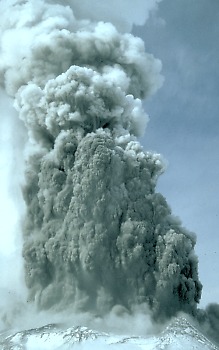 f7
or Mt. Pinatubo of late dramatic vintage, must, “of course,” vent many times more carbon dioxide and other such greenhouse gases into the atmosphere than all man’s activities put together.
f7
or Mt. Pinatubo of late dramatic vintage, must, “of course,” vent many times more carbon dioxide and other such greenhouse gases into the atmosphere than all man’s activities put together.
While observing the monumental spectacle of incredible volcanic eruptions such as these might make that seem obvious, in actuality, however, the reverse is true. It turns out that all “subaerial” (surficial) volcanoes on the planet put together only spew forth some one four-hundredth (!) the rate of present-day anthropogenic CO2 emissions into the Earth’s air.
(Getting into the nitty-gritty of comparative numerology, according to this research report 2 [see also 3], “subaerial” [surficial] volcanoes on Earth annually produce an average of 34 × 1012 grams of carbon dioxide from “passive degassing,” together with 31 × 1012 grams per year resulting from active eruptions, for a total volcanic emission rate of 6.5 × 107 [65 million] metric tons of CO2 per year. That sounds like a lot, but per the indicated piece that amounts to a mere 0.22% of present levels of human-caused emissions of carbon dioxide — which annual anthropogenic contributions may therefore be calculated to lie in the vicinity of 29 or 30 gigatons of CO2.
We may bring forth another value for anthropogenic CO2 emissions, according to this source, to wit: “Fossil fuels account for most of the 6.5 billion tons [gigatons] of carbon — the amount present in 25 gigatons of CO2 — that people around the world vent into the air every year.” 4 Twenty-five gigatons is 2.5 × 1010 metric tons of carbon dioxide released every year as a result of human activities, indicating via this figure that volcanoes produce a mere 0.26% of the CO2 that mankind vents into the Earth’s atmosphere.)
According to either value we see that modern-day anthropogenic activities exhaust into the air something like 400 times as much CO2 as all the surficial volcanoes of the world put together. *
Now can folks begin to get a glimmering as to why, with that vast venting of heat-trapping gases, formerly sequestered for millions of years outside the biotic cycle — which human beings are now spewing into the Earth’s atmosphere for basically the first time in the planet’s existence — responsible scientists looking at this situation conclude that the consequences will eventually pose a grave hazard for our earthly environment?
Humans truly are now affecting the entire planet in toto.
*
While undersea volcanoes also contribute somewhat to total planetary volcanic emissions, that isn’t likely to significantly affect the huge disparity between volcanic and anthropogenic volumes of CO2 emitted, not to speak of the large likelihood that most or all carbon dioxide exhaled by volcanoes into the (deep) oceans, remains dissolved in the oceans.
1 Quinn Schiermeier, “No solar hiding place for greenhouse skeptics,” Nature; Vol. 448, Issue No. 9149 (5 July 2007 [2007-07-05]), pp. 8-9.
2 Stanley N. Williams, Stephen J. Schaefer, Marta Lucia Calvache V., and Dina Lopez, “Global carbon dioxide emission to the atmosphere by volcanoes,” Geochimica et Cosmochimica Acta (Journal of The Geochemical Society and The Meteoritical Society); Vol. 56, Issue No. 4 (April 1992 [1992-04]), pp. 1765-1770.
3 Richard E. Stoiber, “Volcanic Gases From Subaerial Volcanoes on Earth,” Global Earth Physics: A Handbook of Physical Constants, AGU Reference Shelf 1, American Geophysical Union, 1995.
4
Robert F. Service,
“The Carbon Conundrum,”
Science
(journal of the American Association for the Advancement of Science);
Vol. 305, Issue No. 5686 (13 August 2004 [2004-08-13])
(“Toward a Hydrogen Economy”
special issue),
pp. 962-963.
Thanks to the American Association for the Advancement of Science (AAAS) and their journal Science magazine for the symposium on global warming, Qs and AAAs About Global Climate Change, that was held in Washington, D.C., on June 15, 2004 (Earthdate 2004-06-15) — which in addition to providing valuable presentations in their own right (notably not behind Science’s typical high subscription barrier), have proven fruitful as illustrations of basic information on the topic.
f1 Sherwood Rowland (University of California, Irvine), “Earth’s Atmosphere: Greenhouse Gases and Global Warming” (pdf), Slide 02 — Charts thermal ‘blackbody’ radiation emitted by the Sun to the Earth, and in turn radiated away (at a far lower temperature) by the Earth to space. Qs and AAAs About Global Climate Change, hosted by AAAS and its Journal, Science, earthdate 2004-06-15.
f2 Sherwood Rowland (University of California, Irvine), “Earth’s Atmosphere: Greenhouse Gases and Global Warming” (pdf), Slide 05 — Chart illustrating blanketing effect that the greenhouse gases (carbon dioxide, ozone, methane, and water) have on the spectrum of thermal energy radiated away by Earth. Qs and AAAs About Global Climate Change, hosted by AAAS and its Journal, Science, earthdate 2004-06-15.
f3 Thomas Crowley (Duke University), “Global Temperature History: The Last Thousand Years” (pdf), Slide 12 — The Sun, as imaged by SOHO (earthdate 2003-07-03). Qs and AAAs About Global Climate Change, hosted by AAAS and its Journal, Science, earthdate 2004-06-15.
f4 Daniel Schrag (Harvard University), “What Earlier Warm Periods Can Tell Us About the One We’re In” (pdf), Slide 02 — Charts where atmospheric CO2 levels have been for the last 400,000 years, shows where it is now (2004) and will be in 2040-2060. Qs and AAAs About Global Climate Change, hosted by AAAS and its Journal, Science, earthdate 2004-06-15.
f5 Sherwood Rowland (University of California, Irvine), “Earth’s Atmosphere: Greenhouse Gases and Global Warming” (pdf), Slide 04 — Charts monthly mean world carbon dioxide measured at Mauna Loa, Hawaii, between the years 1960 and 2000. Qs and AAAs About Global Climate Change, hosted by AAAS and its Journal, Science, earthdate 2004-06-15.
f6 Daniel Schrag (Harvard University), “What Earlier Warm Periods Can Tell Us About the One We’re In” (pdf), Slide 14 — Charts potential carbon dioxide concentrations from 1990 through 2100 according to various scenarios. Qs and AAAs About Global Climate Change, hosted by AAAS and its Journal, Science, earthdate 2004-06-15.
f7 Phreatic eruption, “Mount St. Helens,” Wikipedia.
f8 Joyce Penner (University of Michigan), “Complexities in the Temperature Signal: Aerosols and Trace Gases” (pdf), Slide 16 — Charts carbon dioxide, sulfate, and temperature record over the last thousand years, and projects temperature increases for the future. Qs and AAAs About Global Climate Change, hosted by AAAS and its Journal, Science, earthdate 2004-06-15.
f9 Richard Alley (Pennsylvania State University), “The History of Abrupt Climate Change” (pdf), Slide 26 — Charts temperature change from 1760, extending into the future to 2100 according to various scenarios. Qs and AAAs About Global Climate Change, hosted by AAAS and its Journal, Science, earthdate 2004-06-15.
f10 David Battisti (University of Washington), “The Synergism Between Ocean and Atmosphere” (pdf), Slide 03 — World map charts anticipated climate change by the end of the 21st century according to two different scenarios (SRES A2 and B2). Qs and AAAs About Global Climate Change, hosted by AAAS and its Journal, Science, earthdate 2004-06-15.
Labels: carbon dioxide, global warming, science
| (Blank last screen) |
|
2002-11-03 2002-11-10 2002-11-17 2002-11-24 2002-12-01 2002-12-08 2002-12-15 2002-12-22 2002-12-29 2003-01-05 2003-01-12 2003-01-19 2003-01-26 2003-02-02 2003-02-16 2003-04-20 2003-04-27 2003-05-04 2003-05-11 2003-06-01 2003-06-15 2003-06-22 2003-06-29 2003-07-13 2003-07-20 2003-08-03 2003-08-10 2003-08-24 2003-08-31 2003-09-07 2003-09-28 2003-10-05 2003-10-26 2003-11-02 2003-11-16 2003-11-23 2003-11-30 2003-12-07 2003-12-14 2003-12-21 2003-12-28 2004-01-04 2004-01-11 2004-01-25 2004-02-01 2004-02-08 2004-02-29 2004-03-07 2004-03-14 2004-03-21 2004-03-28 2004-04-04 2004-04-11 2004-04-18 2004-04-25 2004-05-02 2004-05-16 2004-05-23 2004-05-30 2004-06-06 2004-06-13 2004-06-20 2004-07-11 2004-07-18 2004-07-25 2004-08-22 2004-09-05 2004-10-10 2005-06-12 2005-06-19 2005-06-26 2005-07-03 2005-07-10 2005-07-24 2005-08-07 2005-08-21 2005-08-28 2005-09-04 2005-09-11 2005-09-18 2005-10-02 2005-10-09 2005-10-16 2005-10-30 2005-11-06 2005-11-27 2006-04-02 2006-04-09 2006-07-02 2006-07-23 2006-07-30 2007-01-21 2007-02-04 2007-04-22 2007-05-13 2007-06-17 2007-09-09 2007-09-16 2007-09-23 2007-10-07 2007-10-21 2007-11-04 2009-06-28 2009-07-19 2009-08-23 2009-09-06 2009-09-20 2009-12-13 2011-03-27 2012-01-01 2012-02-05 2012-02-12



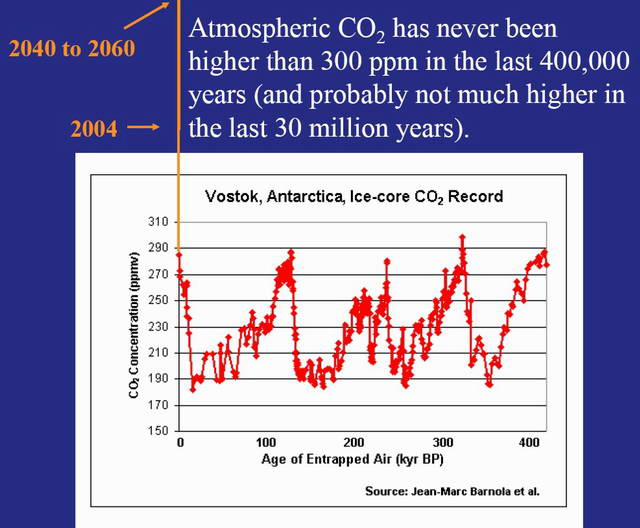
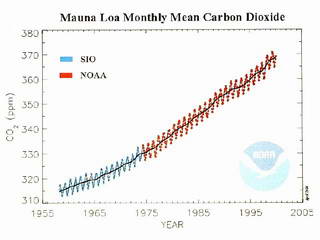

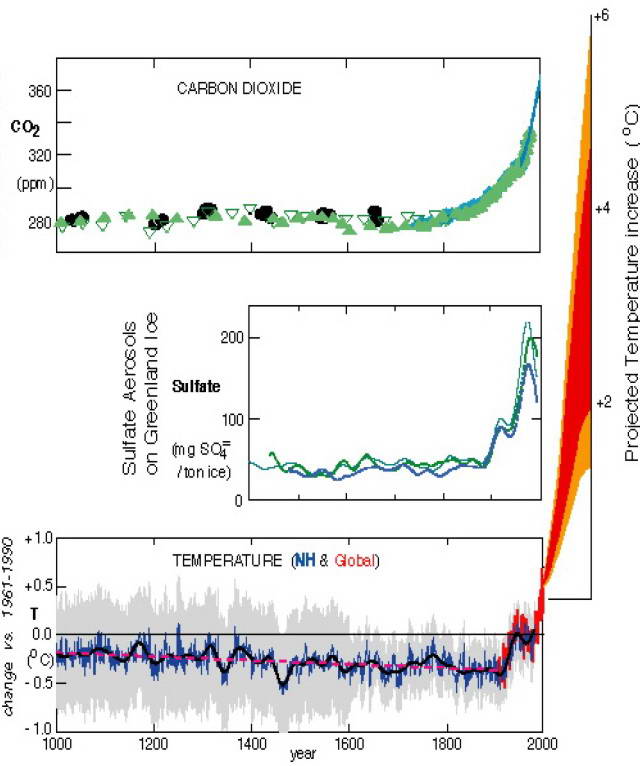
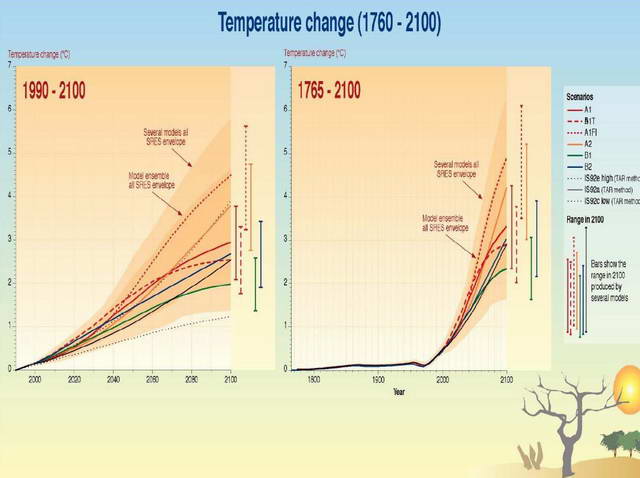


0 comments: (End) Post a Comment